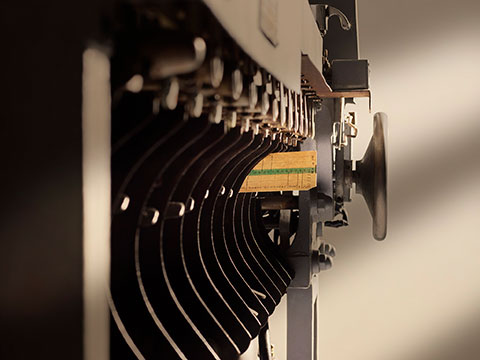De Finetti the mathematician and the Hollerith revolution at Generali
The 1890 United States census was imminent. With the growth of the population, the classification of people would take much longer, and this was a cause of great concern. The American constitution, in fact, stipulates that the number of members of the House of Representatives should be proportional to that of the inhabitants of each State, and taxation is also based on this representation, according to the motto “no taxation without representation”. For the functioning of the state, it was therefore a priority to identify the quickest system for ordering and counting the data collected, so that the information would still be valid at the time of its publication. The solution was offered by one of the collaborators of the Census Bureau, engineer Herman Hollerith, who announced that the process would be mechanised. Citizens would be registered as punched holes in a card. Hollerith’s “tabulation” machines would then sort and count the cards at high speed.

Punch card sorter (1930s)
Assicurazioni Generali Historical Archive
ph. Massimo Gardone
Having patented his invention, Hollerith established the Tabulating Machine Company, later International Business Machines Corporation, or IBM, from 1924. The company survived the Great Depression and became the largest manufacturer of office machines in the world. From 1927, it had a branch in Italy. At the beginning of the 1930s, Generali also took a concrete interest in the Hollerith system for automating and speeding up the updated evidence of the portfolios of the various insurance sectors (branches).
For the life portfolio, Generali used the mobile card system, which made it possible to eliminate cards that were no longer valid, and group or order the cards according to the office’s needs. However, the company sought a solution to make the calculation of cover reserves quicker and more precise. After a careful evaluation of the Hollerith system, it recognised the wide possibilities it offered, and adopted it.
The life branch introduced the machines during the 1930s, with the guidance of the co-director of the branch, Gino Tolentino, and his collaborators, Antonio Sereni and Vittorio Longo. The research for statistical applications was completed by a great mathematician and scientist, Bruno de Finetti, who was an employee and consultant of the company for many years, even during his tenure as a university lecturer. In 1932, the first Hollerith department, equipped with electric tabulators and sorters, was set up in the accounting department of the Trieste Central Management. From then on, the ticking of the processors spread through the company’s offices. A single punch card (a rectangle of special, dielectric card, cut with great precision) represented a policy and contained data for balance sheet groupings and auxiliary values for calculating the reserve. The electro-accounting mechanisation saved time and avoided calculating errors, and set a new standard for work performance work: a sorter could process up to 24,000 cards an hour, while with the tabulator it was possible to add up and print the various punched values with a speed that could reach up to 9,000 cards per hour. The starting data and the results could moreover be represented in any graphic and logical arrangement.
From a system dedicated to this branch, Hollerith then became an autonomous department, which centralised the mechanical processing of the data of all the branches and services of the Trieste management.
With the adoption of tabulating machines, Generali further proved its ability to keep up with the increasingly dynamic times. This decidedly avant-garde technology led not only to huge advantages for the performance of the business and the satisfaction of its policyholders, but also benefits for the entire internal administrative body. The Hollerith department constantly extended and improved its work in agreement with the departments concerned, contributing to the cohesion between the people working in management. Executives solved difficult problems of rationalising and administering their own branch or sector, while employees could be relieved of the effort of repetitive copying jobs.
The so-called electro-accounting mechanisation didn’t just affect Generali’s workflow, but all the uniform works on large amounts of data, for which the advantages were evident: electricity and gas bills, tax records, wages and salaries of large companies and public bodies, but also stock records, industrial cost analyses, official company or state statistics and so on. Punch cards quickly spread around the world, before disappearing around the mid-1980s with the advent of the computer, with which it was possible to enter and process data directly through the computer’s keyboard, putting an end to the use of punch cards as a data storage medium.
